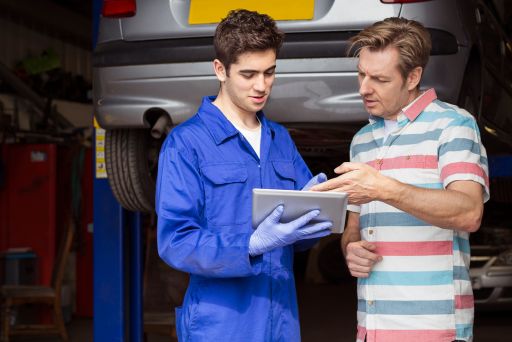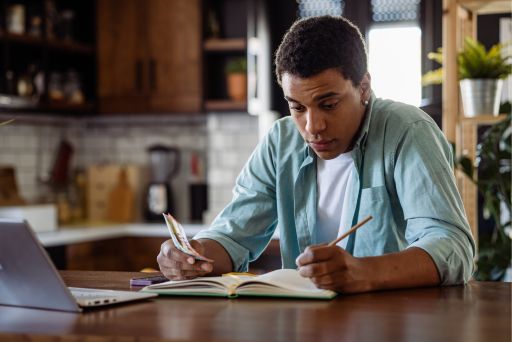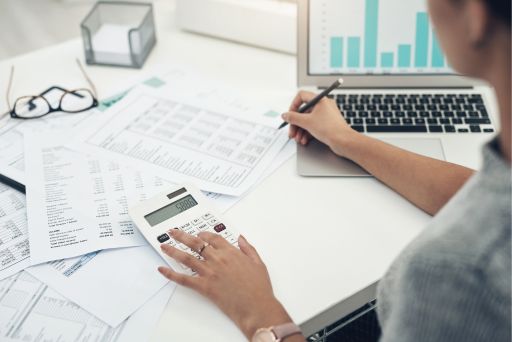
Understanding what is a general ledger is fundamental to comprehending financial accounting. A general ledger (GL) is the primary accounting record where a company maintains a detailed and systematic record of all its financial transactions. These transactions are then used to create financial statements like the income statement, balance sheet, and cash flow statement. This article will delve into the intricacies of the general ledger, exploring its importance in accounting, its structure, and how it plays a critical role in producing accurate financial reports.
What is a General Ledger?
A general ledger is a comprehensive collection of accounts that a business uses to record financial transactions. It forms the basis for creating financial statements, which provide a summary of the financial position of an organization. The general ledger is structured according to a chart of accounts, grouping transactions into categories like assets, liabilities, owner’s equity, revenue, and expenses.
The primary purpose of a general ledger is to consolidate all the accounting data in one place, enabling finance professionals to prepare accurate financial statements. It serves as a central repository for transaction data, which is crucial for financial reporting and analysis. The general ledger plays a vital role in ensuring efficient financial management and in tracking a company’s financial health over time.

Components of a General Ledger
A general ledger (GL) is the primary accounting record for a business, capturing all financial transactions across various accounts. It provides a centralized summary of a company’s financial status and serves as the basis for preparing financial statements. The main components of a general ledger are as follows:
1. Accounts
- Assets: These accounts represent resources owned by the business that have future economic value, like cash, accounts receivable, inventory, property, and equipment.
- Liabilities: These accounts track obligations owed to external parties, such as accounts payable, loans, and other debts.
- Equity: This represents the owners’ residual interest in the business after liabilities are deducted from assets. Equity accounts often include retained earnings, common stock, and dividends.
- Revenue: Revenue accounts track the income a business earns from its primary activities, such as sales revenue and service fees.
- Expenses: These accounts reflect costs incurred to generate revenue, including rent, utilities, payroll, and depreciation.
2. Debits and Credits
In the double-entry accounting system, every transaction involves a debit and a credit to balance the books. A debit increases asset and expense accounts but decreases liability, equity, and revenue accounts. Conversely, a credit increases liability, equity, and revenue accounts but decreases asset and expense accounts.
3. Chart of Accounts (COA)
The chart of accounts is a structured list of all accounts within the general ledger, categorized by type (assets, liabilities, etc.) and often organized with account numbers for easy identification. This structure makes it easy to track, organize, and reference individual accounts in financial reports.
4. Journal Entries
Every transaction is initially recorded as a journal entry, detailing the date, accounts affected, and amounts debited and credited. These journal entries are then posted to the appropriate accounts in the general ledger. Common types of journal entries include adjusting entries, closing entries, and reversal entries.
5. Account Balances
Each account in the general ledger shows a running balance, reflecting the cumulative total of all debits and credits posted. The ending balances of all accounts are used to prepare financial statements and ensure accuracy in reporting.
6. Trial Balance
A trial balance is a summary that lists all general ledger accounts and their balances. It’s prepared periodically to ensure that total debits equal total credits, verifying the ledger’s accuracy. Any discrepancies prompt further investigation and correction.
7. Subsidiary Ledgers
While the general ledger provides a summary of all accounts, subsidiary ledgers offer detailed records of specific accounts, such as accounts payable and accounts receivable. Subsidiary ledgers reconcile back to the general ledger and provide granular transaction details.
8. Financial Statements
The balances from the general ledger accounts feed into the primary financial statements: the balance sheet, income statement, and cash flow statement. These statements offer insights into the company’s financial position, performance, and cash flow dynamics.
The general ledger serves as a powerful tool for tracking a company’s financial activity, ensuring accuracy, and producing reliable financial reports essential for decision-making and compliance.

General Ledger Functions in Financial Management
Recording Financial Transactions
One of the essential general ledger functions is to record financial transactions accurately. This recording process ensures that every financial transaction affects the appropriate general ledger accounts, helping to maintain a clear picture of the organization’s financial position.
Producing Financial Statements
A general ledger is crucial for producing financial statements, such as the income statement and balance sheet. By summarizing the data from the general ledger, finance professionals can assess the company’s financial health and make informed decisions regarding financial management.
General Ledger Reconciliation
The general ledger reconciliation process is an important task that involves matching account balances from the general ledger with external documents like bank statements. This process helps identify any discrepancies or accounting errors that may have occurred during transaction recording.
The Role of General Ledger in Financial Reporting
Trial Balance and Financial Accuracy
A trial balance is prepared using the general ledger to check the mathematical accuracy of the accounting records. The trial balance lists all general ledger accounts and their balances at a specific point in time, ensuring that debits and credits are balanced. This step is vital for preparing error-free financial statements.
Financial Statements and Reports
Financial statements derived from the general ledger include the income statement, balance sheet, and cash flow statement. These documents provide insights into the company’s financial performance and its ability to manage its resources efficiently. Other financial reports like variance analysis and performance reports also rely heavily on general ledger data.
Importance of General Ledger in Accounting
Ensuring Accurate Accounting Records
The general ledger serves as the foundation for maintaining accurate accounting records. It helps prevent accounting errors and ensures that every business transaction is properly documented and categorized. This accuracy is critical when companies seek to understand their financial position and make strategic decisions.
Facilitating Financial Analysis
With the data organized in the general ledger, finance professionals can easily analyze the organization’s financial health. The structured information allows them to assess assets liabilities, track sales revenue, and monitor expenses, which are essential for evaluating the company’s performance and identifying areas for improvement.
General Ledger Reconciliation Process
Importance of Reconciliation
The general ledger reconciliation is a critical aspect of financial accounting that involves comparing account balances in the general ledger with external documents like bank statements. This process ensures that all financial transactions are accurately recorded, and any discrepancies are promptly addressed.
Steps in the Reconciliation Process
The general ledger reconciliation process typically involves several steps:
- Compare balances in the general ledger with external statements.
- Identify and investigate any differences.
- Adjust the account balances as needed to correct errors.
- Ensure that all financial transactions are properly accounted for.

The general ledger is a vital component of any organization’s accounting system, serving as the structured framework for recording financial transactions and generating accurate financial statements. It forms the backbone of financial reporting and analysis, ensuring that all transactions are meticulously documented.
Understanding the general ledger and its role in accounting is essential for maintaining effective financial management and making informed business decisions. Companies can improve their financial processes and gain deeper insights into their financial health by utilizing tools like accounting software and conducting thorough general ledger reconciliation.
If you’re facing challenges or difficulties with your ledgers, Vyde offers expert services to help you navigate these issues and streamline your financial management. Let us assist you in achieving accurate and efficient financial reporting. Book a call with us now
FAQs on General Ledger
1. What is a general ledger in accounting?
A general ledger in accounting is a record of all financial transactions made by a business. It serves as the primary source of information for preparing financial statements and helps maintain a clear picture of the company’s financial position.
2. How does a general ledger differ from a trial balance?
While a general ledger records all the financial transactions in detail, a trial balance is a summary that lists all the general ledger accounts and their balances. The trial balance is used to ensure that debits and credits are balanced before preparing the financial statements.
3. Why is the general ledger important in financial reporting?
The general ledger is crucial for financial reporting as it provides the data needed to create accurate financial statements. It helps track income, expenses, assets, and liabilities, which are essential for understanding a company’s financial health.
4. What is general ledger reconciliation?
General ledger reconciliation is the process of comparing account balances in the general ledger with external documents, such as bank statements, to ensure that all transactions are correctly recorded. This step is essential for maintaining the accuracy of the company’s financial data.
5. How do accounting software systems use the general ledger?
Modern accounting software systems use the general ledger to automate the recording of financial transactions. They categorize transactions using general ledger codes and generate real-time financial reports, which helps in making strategic business decisions.






































